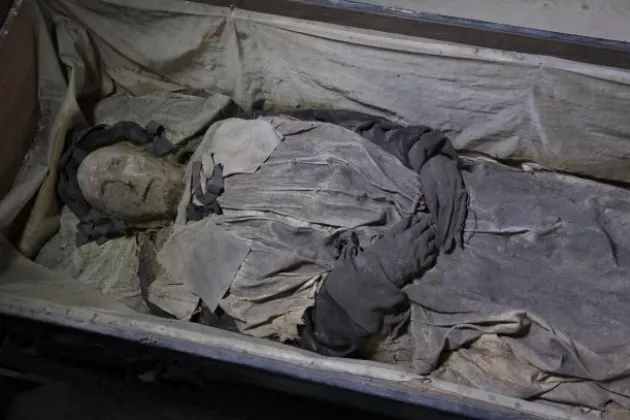Tuberculosis is the bacterial disease that has claimed most lives throughout history. Even today the disease is a major health problem, has a global spread, may be latent in many people and displays increasing resistance to antibiotics. However, the question of when this disease first appeared in human history has been a contentious issue.
In connection with X-ray examinations of the Lund bishop Peder Winstrup’s (1605–1679) mummy, calcifications were found in the lungs – calcifications that could be linked with tuberculosis. A collaboration with the Max Planck Institute in Jena, Germany, was initiated to show whether DNA from the tuberculosis bacillus was present in the calcifications. This has enabled the most complete reconstruction to date of the tuberculosis bacterium, Mycobacterium tuberculosis.
“The results exceeded our expectations and enabled us to revise our understanding of when this disease developed and began to spread among people”, says Torbjörn Ahlström, professor of Historical Osteology at Lund University and one of the authors of the study.
Previous research based on genetics and the use of the molecular clock established the emergence of tuberculosis at around 70 000 years ago. This would mean that the disease followed modern humankind during the migrations out of Africa. However, in view of the new findings revealed by the study of Winstrup’s mummy, and in combination with DNA findings from mummies in Peru and Hungary, this view must be revised. A more thorough calibration based on archaeological and historical data suggests that tuberculosis is no older than around 6 000 years. Furthermore, this means that the disease’s emergence in humans is contemporary with the development of agriculture. The extremely well-preserved genome from Winstrup’s mummy was a key element in the study.
“The archaeological source material is indispensable if we are to be able to reconstruct the development history of infectious diseases”, concludes Torbjörn Ahlström.
Publication in Genome Biology: A seventeenth-century Mycobacterium tuberculosis genome supports a Neolithic emergence of the Mycobacterium tuberculosis complex
